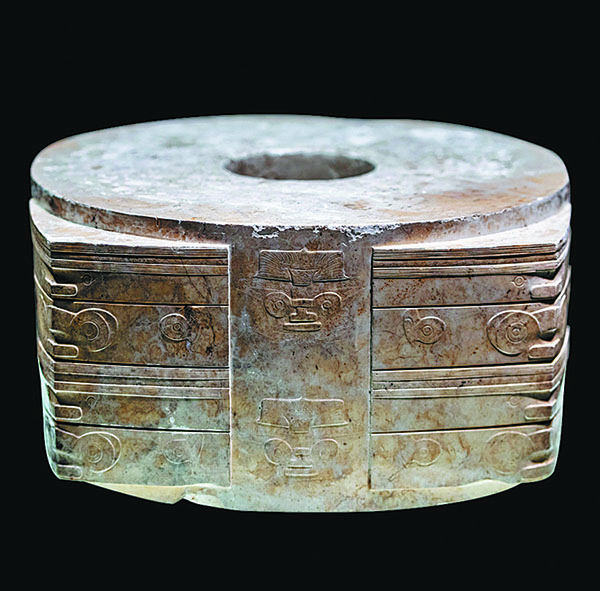A mascot with a winning history
2023/09/30 17:13
Symbol displays the rich cultural heritage of host city, Zhao Xu reports
The day seems long gone when crowd-pleasing animal images didn't dominate the field of sporting mascots. But few would have expected one with a 5,000-year-history behind it. That is, until they get to know Congcong, one of the three mascots for the ongoing Asian Games, held in the eastern Chinese city of Hangzhou, Zhejiang Province. The secret is in the headwear.
Look closely and you'll discover a trapezoid-faced man on top of a beast with big round eyes. For those working on the Archaeological Ruins of the Liangzhu City, located in the northwestern suburb of Hangzhou, the same big round eyes have been staring at them for the past four decades from the many jade cong that have been discovered on the site and beyond.
Typically featuring a cylindrical tube encased in a square prism, cong is the type of ritual jade most representative of the Liangzhu civilization, which existed in the Yangtze River Delta region between 3300 BC and 2300 BC. Much of cong's significance lies with its engraved man-and-beast pattern, viewed today as the ultimate emblem of what the UNESCO World Heritage Convention called "an early state".
By refashioning something imbued with such historical and cultural meaning into one of the most identifiable images associated with an international sporting event, the organizers are hoping that the participants will be intrigued enough to at least dip a toe into that history. If they do, they can find out all about it at the city ruins-turned-heritage park and the nearby Liangzhu Museum.
The material used for the making of cong and other types of Liangzhu jadeware was believed to have been found in the mountains that surrounded the ancient Liangzhu city on three sides (north, west and south). And they arrived at the various workshops located inside the city through the area's waterways, together with wood and stones, without which the city wouldn't have been built.
At the heart of that city was the palatial complex — temples of worship for Liangzhu people who shared a unified belief, as evidenced by their common embrace of the jade culture. Today, what remains of those majestic temples is a giant rammed-earth platform sustaining three earth mounds upon which the temples once stood. The place, symbolic of one of the origins of Chinese civilization as we know it today, is also where the torch for the current Asian Games was ignited.
Judging by the discovery of typical Liangzhu jadeware in other parts of China, sometimes thousands of kilometers away, the Liangzhu culture, during its heyday, may have spread like wildfire. But it was water that provided the undercurrent for the history of Liangzhu.
Having decided to build their homes on the waterlogged lowland of the Yangtze River Delta, the Liangzhu people knew from the outset that they must harness this natural element to their own advantage if they were to stay. Liangzhu's extensive water conservancy system, of which more than 30 dams have been discovered so far, was the most advanced of all neolithic dams in China, affecting an area of 100 square kilometers.
Having proven themselves to be master planners, engineers and builders, Liangzhu people also established themselves as masters of the land.
They cultivated paddy fields, filled their granaries, and brought their economy from a primitive form of collectivism to household-based private ownership. The rows of little earth platforms they constructed to keep the floors of their homes dry — miniatures of the ones at the base of the palatial complex — serve today as reminders of the lives they lived and the glory they minted through ingenuity and sheer hard labor, something that has made their descendants proud.

Liangzhu's "king of all cong". [PHOTO BY GAO ERQIANG/CHINA DAILY]












